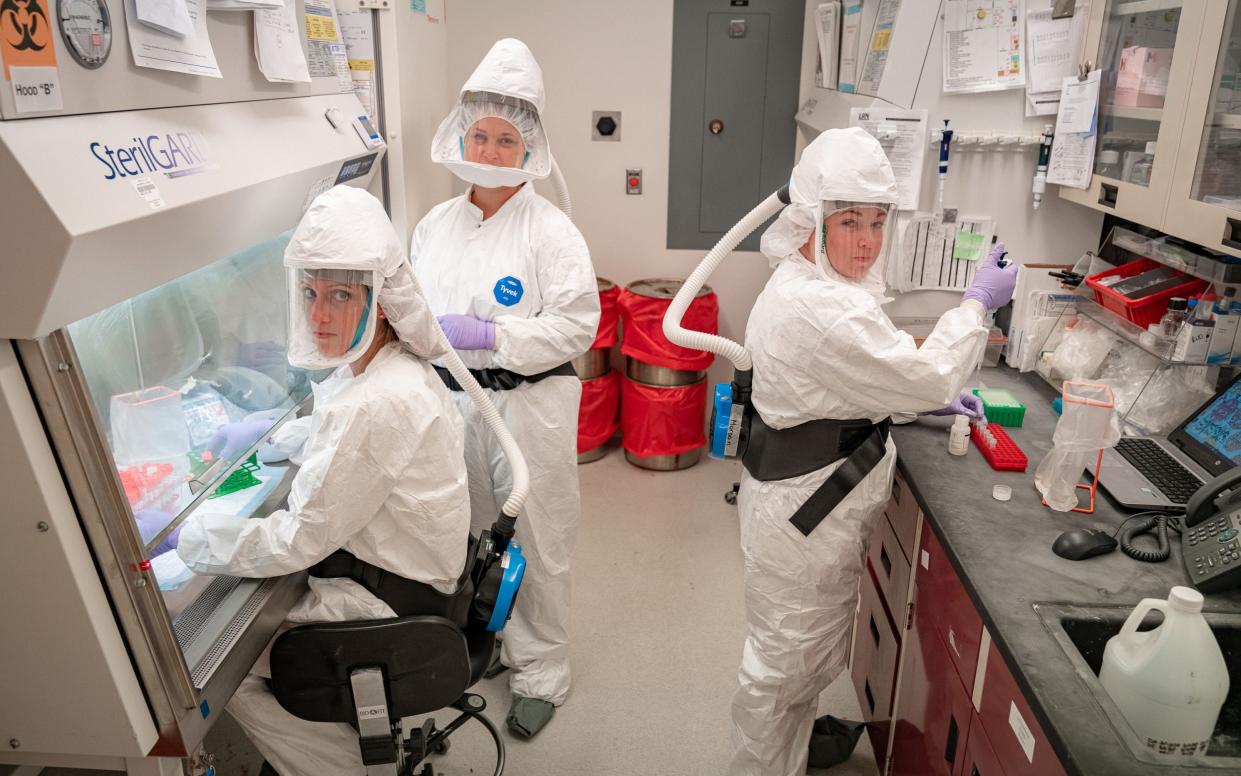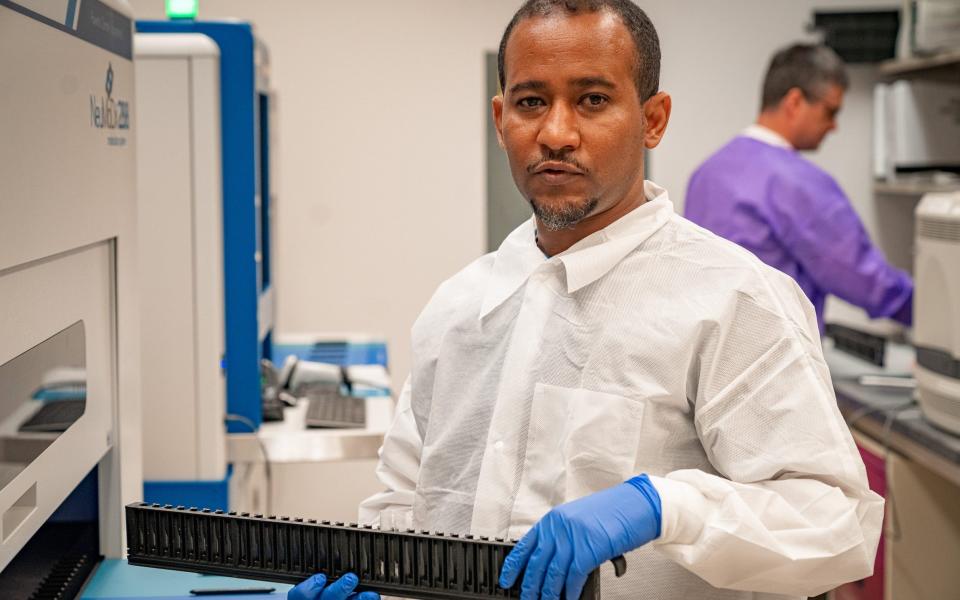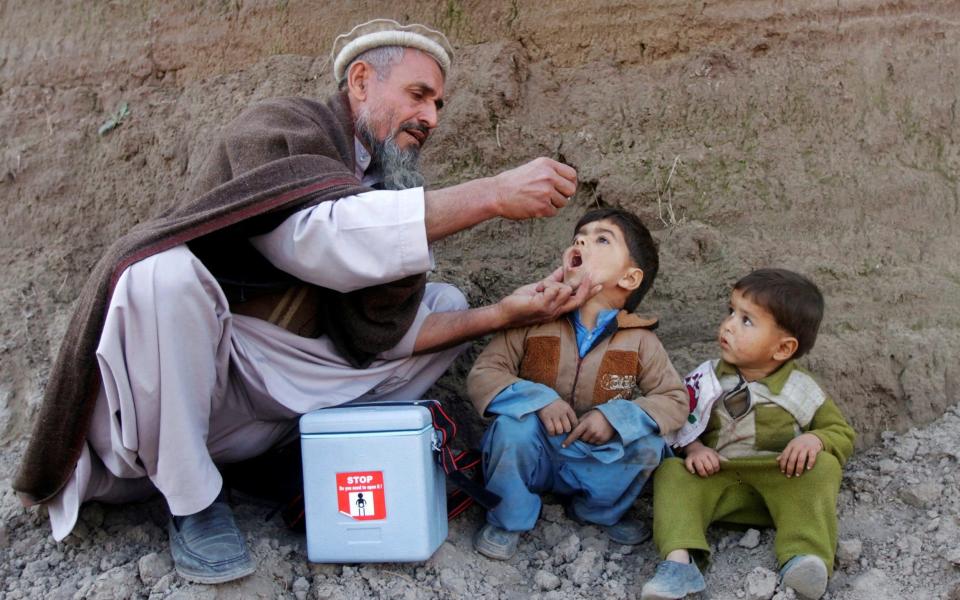New York’s polio outbreak has put global experts on high alert

Health officials in New York are “very, very concerned” about a recent outbreak of polio, the latest in a string of infectious diseases to rattle the state.
Polio was eradicated in the United States in 1979 thanks to high vaccination rates. But now the disease has been detected in wastewater samples in multiple counties, one man has been irreversibly paralysed, and a state of emergency has been declared.
The unidentified individual, who was unvaccinated, is thought to be one of hundreds of New Yorkers who have contracted the virus, as paralysis affects only one in every 200 people.
“We know this is the tip of the iceberg, there are probably hundreds and hundreds of cases,” said Dr Patricia Schnabel Ruppert, the health commissioner of Rockland county, where the man lives.
“One case of polio essentially is an outbreak – because one case of paralytic polio means you almost certainly have hundreds of other people who are infected,” added Dr Emily Lutterloh, director of epidemiology at the Wadsworth Centre, the lab which detected the case.
The polio vaccination rate in New York state is 79 per cent. But in Rockland county, which has a population of 330,000 people, it falls to just 61 per cent. Some zip codes in Rockland have “much lower rates,” Dr Schnabel Ruppert warned.
“There are areas that are quite dense. One zip code has a vaccination rate of 37.2 per cent. It’s very concerning,” she told the Telegraph last week.
The samples have led to an “all hands-on-deck effort,” Dr Schnabel Ruppert said, with the New York State department and the Centre for Disease Control moving in to increase surveillance.

Global circulation
Wastewater testing has since detected the virus in New York City, and the counties of Orange, Sullivan, and Nassau. Similar testing has also found poliovirus circulating in London and Jerusalem, in the latter a second person has been paralysed.
Unlike past outbreaks, the virus detected in all three countries is not wild polio, but vaccine-derived.
When a person is immunised with an oral polio vaccine – which is no longer used in the US or the UK – the weakened vaccine-virus replicates in the gut, generating an immune response. The vaccine is then excreted and very rarely can mutate and spread to other unvaccinated people, especially where coverage is low. This can then result in outbreaks of polio.
A newer, inactivated vaccine (which does not contain live virus) does not result in this shedding process. But it is not as effective at halting outbreaks, and is harder to administer and distribute, meaning countries still battling wild poliovirus tend to use the oral vaccine.
Experts have suggested the cases may, therefore, have spread from a country such as Afghanistan or Pakistan, which continue to use the oral immunisation.
Polio is often asymptomatic and people can transmit the virus even when they do not appear sick. But it can produce mild, flu-like symptoms that can take as long as 30 days to appear. There is no cure, and it can cause irreversible paralysis – and 10 per cent of those who become paralysed die.
Those who have had either vaccine – the oral vaccine or the inactivated vaccine used in the UK and US – are protected against paralysis.

‘A complete surprise’
The positive polio sample in Rockland marked the nation’s first confirmed case in nearly 10 years. Dr Kirsten St. George, director of virology at the Wadsworth Centre said the results came as a “complete surprise”. Dozens of scientists have now been assigned to work on the surveillance.
Dr Lutterloh added that the case has prompted concerns about other vaccine preventable diseases in the state.
“Anytime you have low vaccination rates, and you see a polio case, then you know, we need to be concerned about measles and mumps too,” she said. In 2019, the US suffered a serious measles outbreak in which 1,274 cases were reported – up from 63 in 2010. The country managed to curtail the spread six days before it would have lost measles elimination status.
New York State governor Kathy Hochul has declared a disaster in the state over polio, which has increased the availability of resources, and allowed emergency medical service workers, midwives and pharmacists to administer polio vaccines. A vaccine drive is now under way.
But Dr Lutterloh warned that low vaccine rates are not just an issue in New York.
“There’s a lot of misinformation and disinformation out there… that’s not just a problem in New York,” she said. “As we have all learned over the past several years, a virus anywhere can become a threat everywhere.”
While polio cases have declined globally by 99 per cent since 1998, the emergence of the virus in New York and London has served as a reminder that the fight against polio is not over.
“The key messages from what has happened in New York and London is that, as long as you have transmission anywhere, then transmission is a risk everywhere,” said Aidan O’Leary, director for polio eradication at the World Health Organisation.

‘We have to finish the job’
Currently, up to 95 per cent of global cases are located in Pakistan, Yemen, the Democratic Republic of the Congo, Nigeria and Somalia, he said.
“London and New York have been doing the right things – they have been working to expand and intensify their surveillance systems to fully understand the scale and scope of the risk. They have very high immunisation rates, they also have very good sanitation systems. The risk remains at the lower end of the spectrum,” said Mr O’Leary.
“The real issue this brings forward is finishing the job of protecting [people from polio] with vaccines,” Mr O’Leary said. “We have come such a long way with the vaccine programme, that we have now come to this question: Is it at the top of the priority list of risks? And the answer is no.”

The pandemic played a hand in the recent cases, Mr O’Leary added.
“During the pandemic we had to suspend 60 [polio vaccine] campaigns across 20 countries. That suspension gave the virus time and space to circulate. Since resuming, the trajectory of cases has been sharply downward,” he said.
On Wednesday, the Pan American Health Organization also warned that Brazil, the Dominican Republic, Haiti and Peru are at very high risk for the reintroduction of polio, as dwindling vaccination rates during the coronavirus pandemic has led to historic lows in protection against the illness.
Regional vaccine coverage for polio has fallen to about 79 per cent, the lowest since 1994, PAHO said.
“Let’s be very clear,” Carissa Etienne, PAHO director, said. “Polio is not a treatable disease. Prevention is the only option, and prevention is only possible with vaccines.”
“We have to recognise that in terms of doing and finishing jobs like polio eradication, there’s a limited window of opportunity,” added Mr O’Leary. “The lesson from London and New York is that finishing these jobs is critically important.”
Protect yourself and your family by learning more about Global Health Security

 Yahoo Movies
Yahoo Movies 
